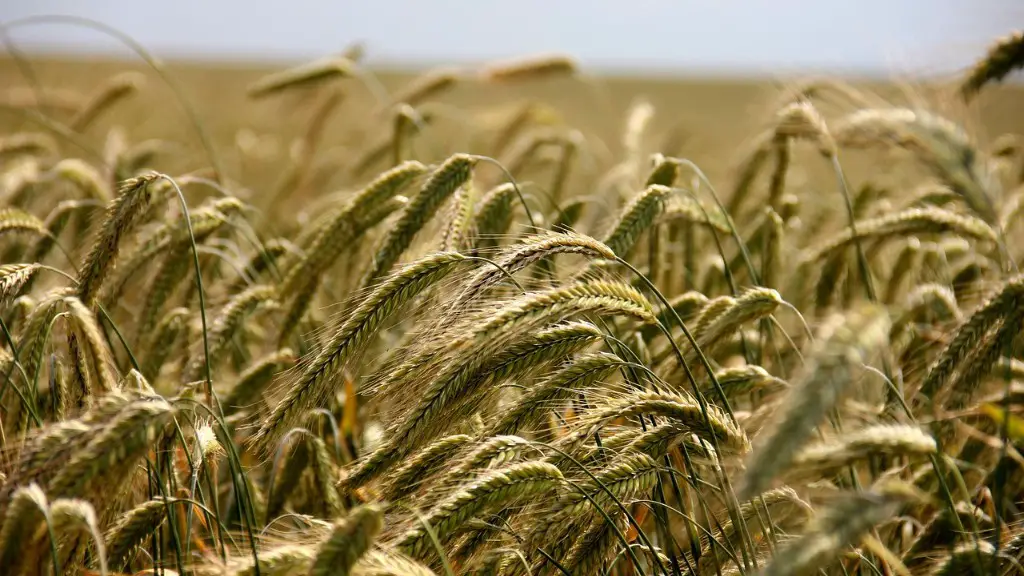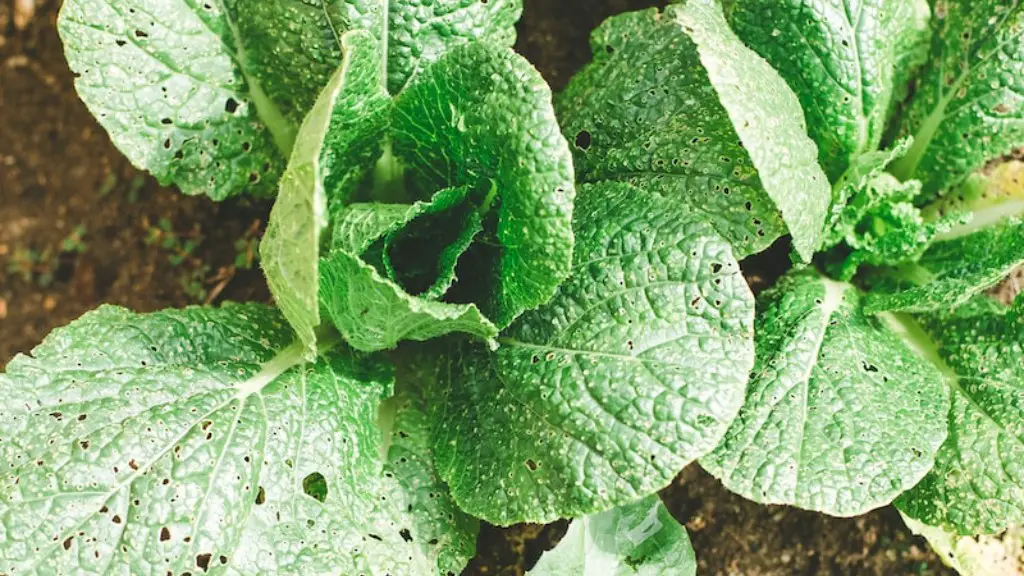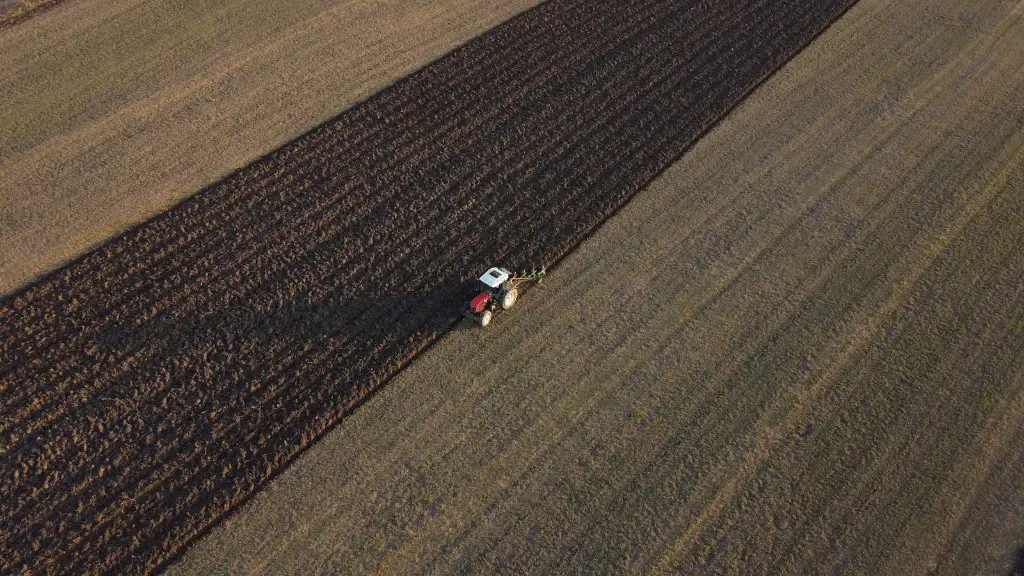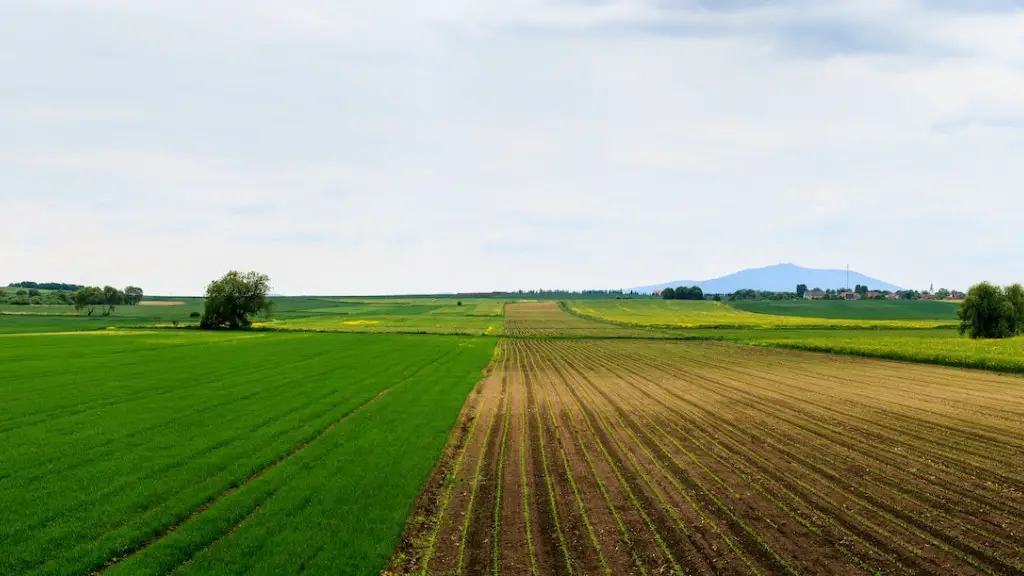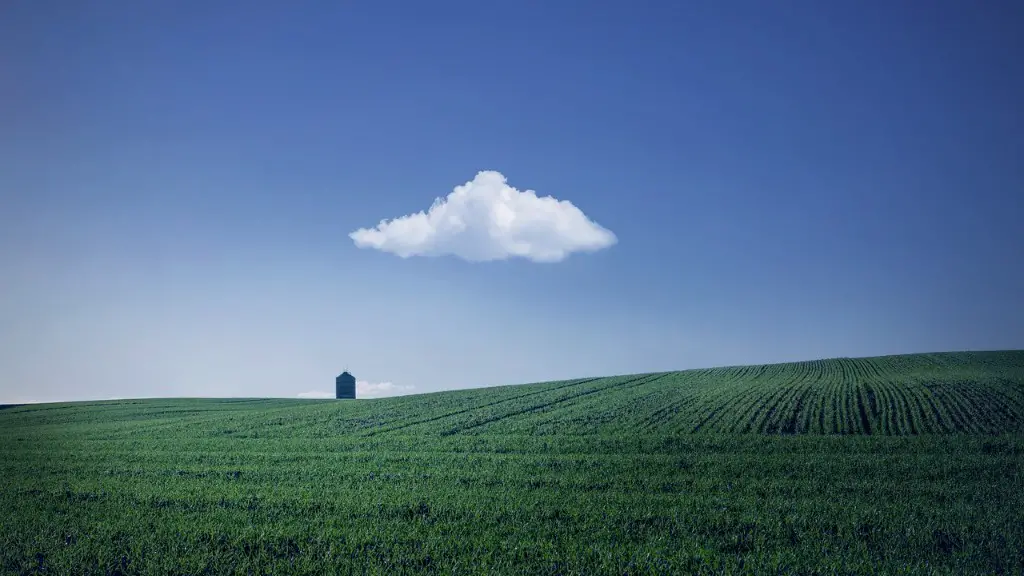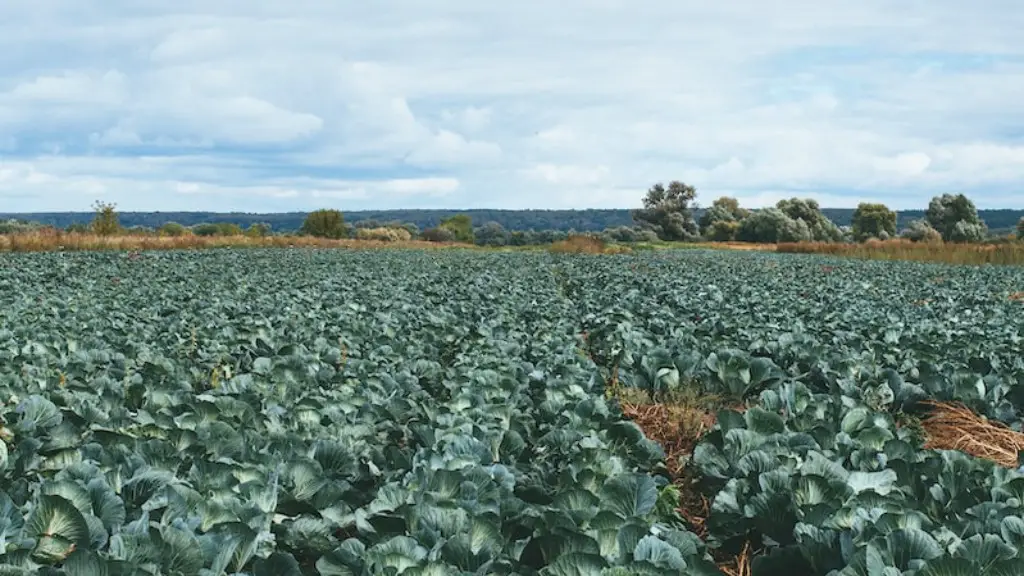Water is one of the most important resources for agriculture. It is essential for crop growth and irrigation. However, due to the increasing demand for water and the limited supply of freshwater, it is important to use water more efficiently in agriculture. Here are some tips on how to use less water in agriculture:
1. Use irrigation methods that conserve water.
2. Use drought-tolerant crops.
3. Use mulch to reduce evaporation.
4. Use cover crops to improve soil health and reduce water needs.
5. Collect and use rainwater.
6. Recycle irrigation water.
7. Improve irrigation efficiency.
8. Monitor crop water use.
9. Use water-saving fertilizer and pesticide application methods.
10. Use weather-based irrigation scheduling.
There are a number of ways to reduce the amount of water used in agriculture. One way is to use drip irrigation rather than sprinklers. Drip irrigation delivers water directly to the roots of the plants, which reduces evaporation and minimizes water waste. Another way to reduce water use in agriculture is to practice crop rotation. This involves growing different crops in different areas of the field in different years. Crop rotation helps to improve soil health and reduces the need for irrigation.
How can we reduce the amount of water used in agriculture?
Water conservation is important for farmers to consider in order to sustain their crops. There are many ways to conserve water, and each method has its own benefits. Irrigation pipeline systems can help farmers to reduce water usage, and cover crops can help to keep the soil healthy and reduce water evaporation. No-till farming is another method of water conservation that can be beneficial for farmers.
Water is a precious resource, and it’s important to do our part to conserve it. Here are 25 ways to save water:
1. Check your toilet for leaks.
2. Stop using your toilet as an ashtray or wastebasket.
3. Put a plastic bottle in your toilet tank.
4. Take shorter showers.
5. Install water-saving shower heads or flow restrictors.
6. Take baths.
7. Turn off the water while brushing your teeth.
8. Turn off the water while shaving.
9. Use a dishwasher instead of washing dishes by hand.
10. Scrape, don’t rinse, your dishes before loading them into the dishwasher.
11. Do full loads of laundry.
12. Hang clothes to dry instead of using the dryer.
13. Water your plants during the cooler hours of the day.
14. Use a rain barrel to collect rainwater for watering your plants.
15. Use a broom instead of a hose to clean your driveway or sidewalk.
16. Wash your car at a car wash that recycles water.
17. Don’t let the faucet run while you’re washing your hands.
18.
What are 10 ways to reduce water
Here are some top tips to help save water:
1. Switch to showers – this can save up to 60% of the water used compared to baths.
2. Keep the sprinklers off – water your garden by hand where possible to avoid wasting water.
3. Turn off the tap – when brushing your teeth or shaving, ensure you turn the tap off to avoid wasting water.
4. Fill up the washing up bowl – rather than leaving the tap running, fill up a bowl and use this to wash your dishes.
5. Make sure your dishwasher is full! – only run your dishwasher when it is full to make the most efficient use of water.
6. Use leftover cooking water – water from cooking vegetables can be used to water plants.
7. Fixing leaky taps is an easy fix for reducing your water footprint – even a small drip can waste a lot of water, so make sure to fix any leaks.
8. Fit low flow aerators on your taps and showers – this can help to reduce water usage without affecting performance.
9. Educate others about water saving – raising awareness of the importance of saving water can help to encourage others to do the
Here are some tips for conserving water:
-Never use your toilet as a waste basket
-Do not let the water run while shaving or brushing teeth
-Take short showers instead of tub baths. If you must use a tub, close the drain before turning on the water and fill the tub only half full
What are 50 ways to save water?
Water is a vital resource for life on Earth. Although water covers 70% of the planet’s surface, only 2.5% is freshwater. Of that 2.5%, over two-thirds is locked up in ice caps and glaciers. As a result, only 0.8% of the world’s water is available to meet the needs of 7.6 billion people, as well as the needs of industry and agriculture.
With water being such a precious resource, it is important to find ways to conserve it. Here are 50 ways to conserve water:
1. When watering plants, apply water only as fast as the soil can absorb it.
2. Use sprinklers that deliver big drops of water, close to the ground.
3. Use a water-conserving icemaker.
4. Teach children to turn off faucets tightly after each use.
5. Install water-saving shower heads and faucet aerators.
6. Repair leaks promptly.
7. Keep a pitcher of water in the fridge for drinking, instead of running the tap.
8. Water your lawn only when it needs it.
9. Use a broom instead of a hose to clean
1. Check for leaks: Regularly check your pipes and faucets for any leaks. A small drip can waste a lot of water over time, so it’s important to fix any leaks as soon as possible.
2. Measure your water flow: Check the flow rate of your taps and showerheads. You can do this easily with a bucket and a stopwatch. A low-flow showerhead can save a lot of water.
3. Check your toilet cistern for leaks: A leaky toilet can waste a lot of water. To check for leaks, put a few drops of food colouring in the cistern and see if it appears in the bowl after 15 minutes.
4. If you have a single-flush toilet, put a 15-litre plastic bottle filled with water in the cistern to reduce the amount of water you flush.
5. Don’t let the tap run while you’re brushing your teeth: This can waste up to 6 litres of water per minute. Fill a glass with water and use that to brush your teeth.
6. Take shorter showers: A typical shower uses around 15 litres of water per minute. Reducing your shower time by even
What are 20 ways to conserve water?
Here are 20 ways to save water:
1. Use a displacement device (a water-filled bottle) in the toilet tank to reduce the amount of water required to flush
2. Use toilet only for its intended purpose
3. Repair leaky taps or toilets immediately
4. Consider a small capacity toilet when replacing an old one
5. Take shorter showers
6. Turn the tap off while brushing your teeth
7. Install water-saving shower heads
8. Collect rainwater for watering plants
9. Do not let the tap run while washing dishes
10. Defrost frozen food in the fridge, not under running water
11. Water plants in the early morning or evening, when evaporation is minimized
12. Use a broom, not a hose, to clean driveways and sidewalks
13. Wash your car on the lawn to water it at the same time
14. Adjust lawn sprinklers so they don’t water the sidewalk or street
15. Install a “gray water” system to reuse water from showers and laundry
16. Check for leaks in your home’s plumbing and repair them promptly
17. Use a front-loading
There are many ways to save water, and even small changes can make a big difference. Here are 100 ways to save water:
1. When washing dishes by hand, don’t let the water run while rinsing.
2. Evaporative coolers require a seasonal maintenance checkup.
3. Adjust sprinklers so only your lawn is watered and not the house, sidewalk, or street.
4. Run your dishwasher only when it is full and you could save 400 gallons a month.
5. Collect rainwater in a rain barrel to water your plants.
6. Use a broom instead of a hose to clean your driveway or sidewalk.
7. Check for leaks in your home and repair them promptly.
8. Rinse fruits and vegetables in a bowl of water instead of letting the water run.
9. Don’t use running water to thaw meat or poultry.
10. Defrost frozen food in the refrigerator.
11. water your plants in the morning or evening when it is cooler and they will require less water.
12. Use a landscape fabric or mulch to reduce evaporation and protect plants.
13. Group plants together based on their water needs.
14. Use
What are some water saving measures
It is estimated that a family can save up to 30,000 gallons of water a year by making small changes in water usage. The following are simple water-saving habits that can make a big difference:
1. Taking a minute off your shower can save up to 700 gallons of water per month.
2. Brushing your teeth with the tap off can save up to 200 gallons of water per month.
3. Going easy with the hose can save up to 1,000 gallons of water per month.
4. Fixing any leaks can save up to 10,000 gallons of water per year.
5. Scraping plates instead of rinsing them, before putting them in the dishwasher can save up to 500 gallons of water per month.
6. Placing a plug or container in the sink when preparing vegetables, washing fruit or washing dishes can save up to 500 gallons of water per month.
Did you know that nearly one Trillion gallons of water are wasted each year in the US from water running down the drain? That’s enough water to supply the entire state of California for over six months! One of the easiest ways to conserve water is to simply collect and reuse it where possible. For instance, place a bucket in your shower and collect the cold water while you wait for the hot water to turn on. You can also collect rainwater and use it for watering your plants or garden. Every little bit helps and by conserving water we can make a big impact on our environment!
What are the 4 ways that water can be managed sustainably?
Water is one of our most important natural resources, and it is vital that we use it wisely. Reducing water use through waterless toilets, water efficient appliances, and water quantity monitoring, is an important part of sustainability for domestic water supply.
Waterless toilets can save a large amount of water, and are becoming more popular in households and businesses. Water efficient appliances not only save water, but can also save you money on your energy bills. Water quantity monitoring can help you to identify and repair leaks, and also to ensure that you are not using more water than you need.
Efficient piping systems that are leak-free and well insulated provide a network that is reliable and help to limit water waste. We all have a role to play in preserving our water resources, and by taking steps to use water more efficiently, we can make a big difference.
There are many ways to prevent water pollution. Some simple things we can do are to pick up litter and throw it away in a garbage can, to blow or sweep fertilizer back onto the grass if it gets onto paved areas, to mulch or compost grass or yard waste, and to wash your car or outdoor equipment where it can flow to a gravel or grassy area instead of a street. By taking these simple steps, we can help to prevent water pollution and keep our waterways clean.
What are 7 informative ways to conserve water
Water is essential to life, but it’s also a limited resource. When it comes to outdoor water use, such as watering lawns and gardens, it’s important to use water wisely. Here are seven ways to save water and protect this valuable resource:
1. Water lawns just 1-2 times a week.
2. Don’t water lawns between 9 a.m. and 5 p.m. – the warmer temperatures during these hours cause water to evaporate before it has a chance to soak in.
3. Check for plumbing leaks. A leaky faucet can waste up to 3 gallons of water per day.
4. Install water-efficient fixtures. Low-flow showerheads and toilets can save a significant amount of water.
5. Take shorter showers. A typical shower uses 2.5 gallons of water per minute. Reducing your shower time by just a few minutes can save a lot of water.
6. Put a nozzle on your garden hose. A hose left running can waste up to 10 gallons of water per minute.
7. Don’t let the faucet run and run. When brushing your teeth or washing your hands, turn the water off until you
Water is an important resource and we should all try to save as much as possible! Here are some useful tips on how you can help save water:
-Take shorter showers: Showers generally last around 10 minutes, which uses as much as 200 litres of water. Try to minimize your shower time to help save water.
-Thaw frozen food early: You can do it in the fridge or at room temperature, as long as you don’t run any water from the tap.
-Don’t let the tap run while brushing your teeth: Brushing your teeth for two minutes uses about six litres of water. If you let the water run the whole time, you’re wasting water unnecessarily.
-Wash your fruits and vegetables in a bowl: Fill up a bowl with water and wash your fruits and vegetables in that instead of letting the water run from the tap.
-Water your plants during the cooler hours of the day: Water evaporates quickly, so watering your plants during the cooler hours of the day (early morning or evening) will help reduce water loss.
Does and don’ts to save water?
Water is one of our most precious resources, so it’s important to use it wisely. Here are some tips on how to conserve water and reduce your water bill:
DO take shorter showers and save 3-5 gallons every minute.
DO fill the tub halfway and save 10-15 gallons.
DO install water-saving toilets, shower heads and faucet aerators.
DON’T run the water while shaving, washing your hands or brushing your teeth. You can save up to 4 gallons of water per minute by doing this!
Rainwater harvesting is an extremely effective way of conserving natural water and replenishing the groundwater level. By collecting rainwater and allowing it to percolate into a deep pit or reservoir, it seeps down and improves the groundwater table. This is an incredibly useful method for areas that experience water shortages or droughts.
Where do we use water wisely
It is definitely more efficient to use a bowl to rinse vegetables, or even just wash dishes in general. This way, you can save the water to water your plants. The same goes for using your washing machine and dishwasher–only use them when you have a full load. If your machines have a half load button, use that whenever possible to save even more water.
We need water for drinking, cooking food, washing utensils, cleaning floor, brushing teeth, bathing, washing clothes, flushing toilets and watering plants.There are many sources of water like rain water, ground water, ponds, lakes, rivers and canals.We can also save water by using less water for our daily activities.
Final Words
There are a number of ways to use less water in agriculture. One way is to use irrigation methods that are more water efficient such as drip irrigation. Another way to use less water is to grow crops that are more drought tolerant. Yet another way to use less water is to use cover crops or mulch to reduce evaporation.
There are a number of ways to use less water in agriculture. One way is to irrigate with drip tape instead of using a sprinkler system. Drip tape is more efficient because it only delivers water to the roots of the plants, and not to the surrounding area. Another way to use less water is to plant drought-resistant crops. These crops are able to withstand longer periods of drought and do not require as much water to grow.
